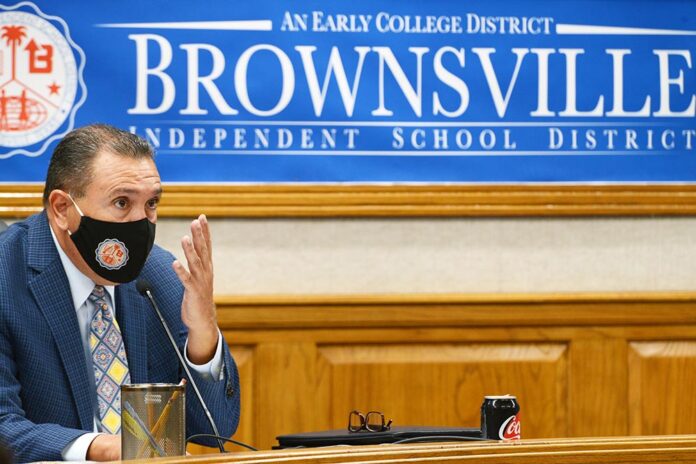
The Brownsville Independent School District took the choice that favored the students when it decided to return to classes on Jan. 5 after the holiday break as scheduled, Superintendent Rene Gutierrez said Wednesday.
Some Rio Grande Valley school districts delayed returning to classes until the following Monday, Jan. 11, and Gutierrez said he heard some criticism BISD did not do the same in light of the surging omicron variant of COVID 19.
Gutierrez said delaying the start would amount to taking the path of least resistance.
“We’re trying to do what’s right for the kids. It’s too easy to just delay it and we have more time to prepare,” he said. “We worked during the holidays to be ready for the first day of school when our calendar said was going to be the first day of school and that day was Wednesday, Jan. 5, without any delays, and we did it because we feel that it’s extremely important for our kids to be with us in school and our schools need to remain open for them. … We cannot delay any more because there’s a sense of urgency for our kids to be learning and to start closing those gaps as soon as possible.”
The return did cause some disruptions, with COVID infections surging, likely because of the omicron variant’s extreme contagiousness and due to holiday gatherings over the break.
On the first day back, BISD had to cover for 438 teacher absences, but substitutes were available to cover only 374, meaning the other 64 had to be covered by central office, curriculum and business office staff. By Friday, 597 classes had to be covered but only 520 substitutes were available, leaving 77 jobs to be filled by alternative means, Deputy Superintendent for Curriculum and Instruction Anysia R. Trevino said in a presentation to the BISD Board of Trustees at their meeting Tuesday night.
Total substitutes needed had declined to 446 by Tuesday, with only 25 of the vacancies being filled by non-teaching personnel, Trevino said.
She also said 850 students have been assigned to remote conferencing because of positive COVID tests, although this number fluctuates daily and there is more turnover now because the CDC reduced the quarantine time from 10 days to five. On Tuesday 365 students attended remote conferencing, she said.
On Jan. 5, BISD had a 75% attendance rate but by this week it had increased to the mid-80s. Gutierrez was hopeful attendance would soon return to the 92% who attended in-person classes before the break.
“School is the best place for the students to be,” he said. “We have all the personal protective equipment available for the students and the staff, and then of course we’ve had the safety protocols already for over a year. So we feel that because we advocate for mandatory masks and for hand washing regularly and social distancing as much as possible, and then we have the air purifiers and the plexiglass, so we have a lot of protection for our children to be safely in school and learning in their classrooms.”
He said the PPE and safety procedures may not be available to students at home, whereas if they’re in school we have all of those protocols in place and the resources to keep them as safe as possible, at least while they’re with us during the school day.
Gutierrez added, “the kids have already been deprived of a lot of their education because of the pandemic for the last two years. We’ve learned how to coexist with this virus in a way, and we’ve learned how to deal with the safety protocols better. It’s the right thing to do to open up our schools and have our kids come in because we can’t shut down the schools anymore.”



